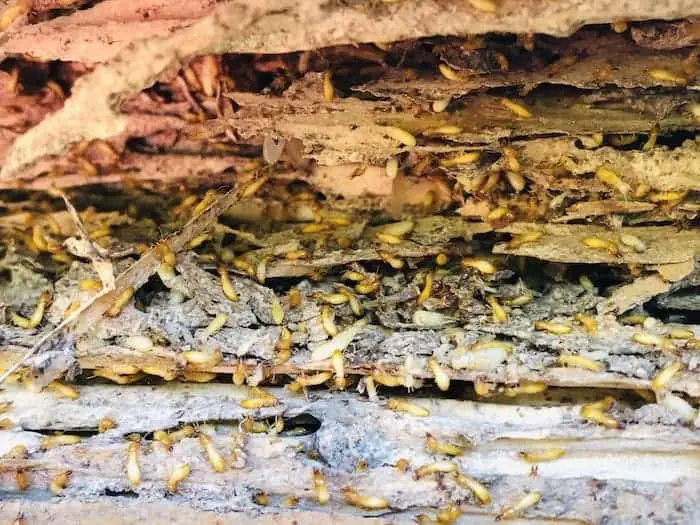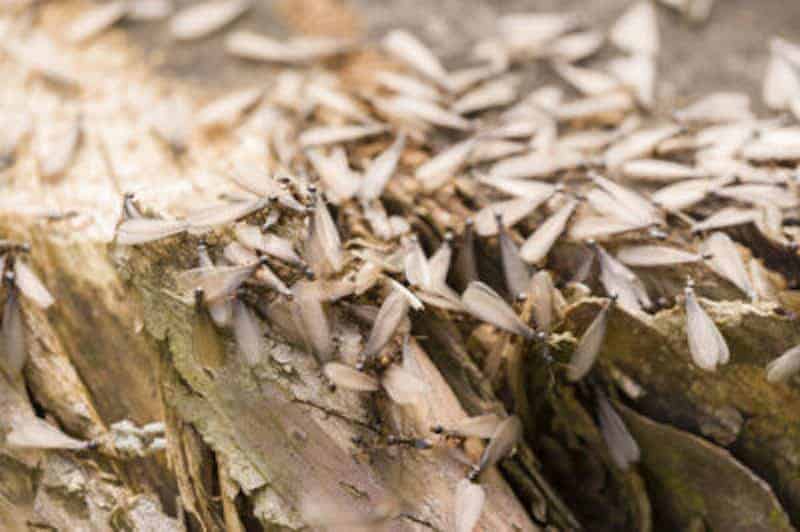How to Detect, Prevent, and Treat Termites in Trees
Just the word “termite” insights fear into the minds of homeowners everywhere. Notorious pests that cause thousands upon thousands of dollars in damage to homes and businesses every year, termites are tricky to remove. Not only damaging to homes, but termites can also infest your trees.
Finding termites and saving whatever they’ve infested requires a rapid response. Their population can soar quickly and the eggs can be difficult to get rid of.
So, how do you detect termites in trees? The first step of detection begins with investigating your trees for termites near the base or termite tubes running down the bark. From there, creating a plan and consulting with a professional on the best treatment options for your trees immediately after noticing potential signs of termites, will double as your prevention and treatment steps.
The important thing to remember is DO NOT HESITATE! When it comes to termites, immediate action is necessary. If you can spot the signs of potential termite damage, you may be able to avoid a huge headache that will end up costing a lot of time and money. In this article, I’ll tell you all the tips and tricks to prevent the infestation of termites in your tree and how to treat them.
Signs of Termites
Many people don’t think to inspect their trees for sign of termites – they’re often more worried about their homes. But the truth is, noticing an infestation in your tree could be a sign that you already have termites in your home, or that they could be entering there soon.
If you suspect your tree may be looking weak or “droopy” you should think to inspect for termites. So, what are the signs of termites on your trees?
- Base of the tree: at the base of your tree, take a shovel and dig near the roots. If your tree has termites, they will be visible just below the soil line.
- Termite/Mud Tubes: termites often go undetected for a long time due to “mud tubes” which allow them to travel between the food source and their nest without being exposed to the open. Look at the bark on your tree for small, rusty-brown tubes in the crevices of the bark – if you have termites, they should easily stand out from the bark.
- Swarmer/Flying Termites: if the infestation has gotten out of control, you might start to notice flying termites, which emerge from the nest to reproduce and settle new colonies. This is your sign to get a professional involved – they could be moving quickly to your home.
Termites typically only eat and attack dead wood. When they infest your tree, they will eat the wood from the inside until it’s too weak to stand. This can be extremely dangerous because the tree could end up falling on your house or your backyard – where the termites eventually find their way inside your home.
Checking for signs and being observant can and will save your home and your trees.
Preventing Termite Infestations
Preventing termite infestations is not always the easiest thing to do. Once a termite colony begins forming, it’s almost too late, and there are only so many things you can do to prevent them from landing on your trees.
- Remove dead tree stumps from your yard: termites prefer to feed on dead wood, and while this is helpful at times, it is not helpful when they’re close to your home.
- Avoid stacking firewood against the side of your house: a pile of wood right up against your house is one of the easiest ways for termites to enter your home – and it will make your bonfires much smaller.
- Be careful to manage the amount of mulch around your home and garden: depending on where you live, you use mulch This mulch is just as susceptible to termite infestation as trees and other wood; if you decide to use mulch, be careful not to pile an excess amount of mulch together.
- Consider hiring a professional termite inspector to do annual inspections: mostly for those who live in older homes where the wood could experience rot, but it is a good idea to have a termite inspector come out annually – this way you can catch an infestation before it gets out of control.
No prevention plan is perfect, but doing these simple things can truly save you from such an awful experience as trying to remove termites.
 Treating for Termites in Your Trees
Treating for Termites in Your Trees
If you have found evidence of a termite colony residing in your tree, start acting quickly to treat the affected areas. How do you do that?
- Remove all infected wood immediately and burn it to make sure termites do not spread
- Locate the colony and eradicate it – they can be in the ground and underneath buildings so this could turn into a huge process
- Spray termiticide in a 3-foot radius around the base of the infected tree, as well as any other nearby trees/wood, and up the trunk of the tree about 2 feet. For extra protection, you can spray around the perimeter of the yard as well.
- Go to your nearest home and garden store and buy some termite traps and set them up around the area. These traps will alert you to any new termite activity, are chemical-free, and will not harm your children or pets.
- Continuously monitor the affected area for any additional evidence of termites and take precautions for your other trees and your house.
If the infestation is out of control, your best bet – and potentially safest – will be to get rid of the tree completely. This will keep it from falling on your home or allowing the spread to reach inside your home.
Why Do Termites Infest Trees?
Like we said earlier, termites typically prefer to feed on dead wood. This is great news for when we need to get rid of stumps and for keeping forest floors maintained – it’s not so great if we have a dead tree in our yard and don’t know it.
There are, however, some species of termites that will feed on healthy wood. It can be difficult to predict where or when a termite colony might take refuge in your yard or home, and whether or not they will be the ones who feed on dead or healthy wood.
In regards to why termites infest trees, it is a food source to them, and sometimes we are just unlucky enough to be chosen to have that food source.
Related Questions
When Would You Be Most Likely to Notice Termites?
Established termite colonies are, unfortunately, year-round problems. They grow most during the warm weather. Checking your house and trees and any wooden structures for termites from April-September, depending on where you live, would be the best time to notice any termites.
Because of the nature of how termites live, infestations can last for years before we start noticing the problem.
How Long Does It Take to Get Rid of Termites?
If you have hired a professional or taken it upon yourself, treating for termites in trees can take only 1 day. The challenge is whether termites recolonize in the future. Termite eggs are extremely small and hard to spot, and not all treatments will eradicate them from the source.
Most products will help protect against re-infestation for up to 5 years, but if there are eggs that have evaded the treatment, your problem will not go away. Professionals will recommend that once you have discovered a termite problem, you should regularly have your home and trees inspected for termites.
Are There Natural Methods to Get Rid of Termites?
Natural is almost always the preferred method to remove any unwanted pests these days – for good reason. And though termiticide is your best bet at getting rid of termites, there are some natural methods too.
Boric acid, nematodes, salt, and vinegar are all natural ways that you can use to remove termites. Nematodes are natural predators to many different types of garden pests and can be effective, however, they can take time to take down an established population of termites.
Salt, vinegar, and boric acid are products you can spread around the affected areas – these methods vary on their effectiveness at killing the termites. In order for natural methods to work, they must be implemented correctly, otherwise, you will see little to no change.
How Much Does it Cost to Get Rid of Termites?
The cost range for getting rid of termites varies widely – especially between treating a tree vs. your home. Treatment can range anywhere from $75 to $1495 – but it will depend on the size of the colony, the size of the tree/house, and the product being used.
If you have a termite problem, be expected to dish out some money if you want it to go away completely. Failing to treat a termite problem can greatly impact the value of your real estate.

